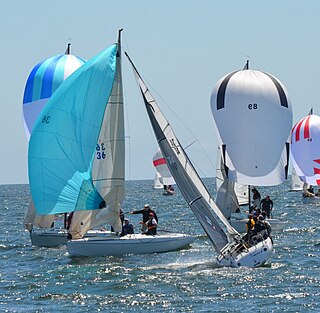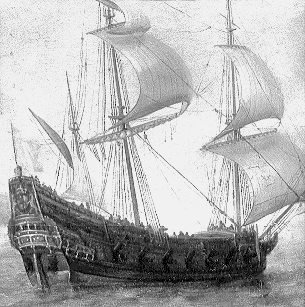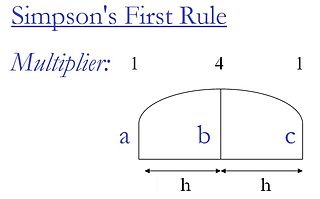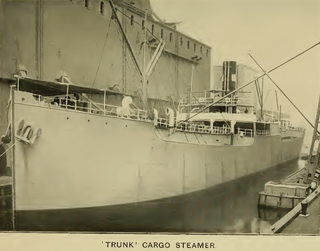 W
WNaval architecture, or naval engineering, is an engineering discipline incorporating elements of mechanical, electrical, electronic, software and safety engineering as applied to the engineering design process, shipbuilding, maintenance, and operation of marine vessels and structures. Naval architecture involves basic and applied research, design, development, design evaluation (classification) and calculations during all stages of the life of a marine vehicle. Preliminary design of the vessel, its detailed design, construction, trials, operation and maintenance, launching and dry-docking are the main activities involved. Ship design calculations are also required for ships being modified. Naval architecture also involves formulation of safety regulations and damage-control rules and the approval and certification of ship designs to meet statutory and non-statutory requirements.
 W
WMaritime travel experienced a large leap in the capabilities of seafaring vessels thanks to technological improvements in shipbuilding in the early modern era. Europe, Asia, and the Middle East all saw improvements on prior construction techniques, contributing to the Age of Discovery. As a result, the introduction of these technologies in the production of naval vessels was critical as they allowed nations that utilized these advancements to ascend to a state that could expand its influence at a far greater range. In military engagements, the exploration of new lands and potential colonies, or the transportation of goods for trade, better shipbuilding techniques coincided with prosperity. It is during this time that the practice of naval architecture appeared, as skilled designers could produce designs that had an enormous impact in ship performance and capabilities.
 W
WThe angle of list is the degree to which a vessel heels to either port or starboard at equilibrium—with no external forces acting upon it.
 W
WAngle of loll is the state of a ship that is unstable when upright and therefore takes on an angle of heel to either port or starboard.
 W
WThe anti-torpedo bulge is a form of defence against naval torpedoes occasionally employed in warship construction in the period between the First and Second World Wars. It involved fitting partially water-filled compartmentalized sponsons on either side of a ship's hull, intended to detonate torpedoes, absorb their explosions, and contain flooding to damaged areas within the bulges.
 W
WThe bilge of a ship or boat is the part of the hull that would rest on the ground if the vessel were unsupported by water. The "turn of the bilge" is the transition from the bottom of a hull to the sides of a hull.
 W
WA bow wave is the wave that forms at the bow of a ship when it moves through the water. As the bow wave spreads out, it defines the outer limits of a ship's wake. A large bow wave slows the ship down, is a risk to smaller boats, and in a harbor can damage shore facilities and moored ships. Therefore, ship hulls are generally designed to produce as small a bow wave as possible.
 W
WA Butterworth cover is a hatch on the deck of a cargo vessel that is used to seal a small opening that admits to the space below.
 W
WThe camber is a measure of lateral main deck curvature in naval architecture. The curve is applied to a deck transversely, measured as the height of deck at centreline above the height of deck at side.
 W
WA catamaran is a multi-hulled watercraft featuring two parallel hulls of equal size. It is a geometry-stabilized craft, deriving its stability from its wide beam, rather than from a ballasted keel as with a monohull boat. Catamarans typically have less hull volume, smaller displacement, and shallower draft (draught) than monohulls of comparable length. The two hulls combined also often have a smaller hydrodynamic resistance than comparable monohulls, requiring less propulsive power from either sails or motors. The catamaran's wider stance on the water can reduce both heeling and wave-induced motion, as compared with a monohull, and can give reduced wakes.
 W
WA cofferdam is an enclosure built within a body of water to allow the enclosed area to be pumped out. This pumping creates a dry working environment so that the work can be carried out safely. Cofferdams are commonly used for construction or repair of permanent dams, oil platforms, bridge piers, etc., built within or over water.
 W
WA compartment is a portion of the space within a ship defined vertically between decks and horizontally between bulkheads. It is analogous to a room within a building, and may provide watertight subdivision of the ship's hull important in retaining buoyancy if the hull is damaged. Subdivision of a ship's hull into watertight compartments is called compartmentation.
 W
WFlare is the angle at which a ship's hull plate or planking departs from the vertical in an outward direction with increasing height. A flared hull typically has a deck area larger than its cross-sectional area at the waterline. Most vessels have some degree of flare above the waterline, which is especially true for sea vessels. Advantages of hull flare can include improvements in stability, splash and wash suppression, and dockside utility.
 W
WA floating airport is an airport built and situated on a very large floating structure (VLFS) located many miles out at sea utilizing a flotation type of device or devices such as pneumatic stabilized platform (PSP) technology.
 W
WFlush deck is a term in naval architecture. It can refer to any deck of a ship which is continuous from stem to stern.
 W
WForces on sails result from movement of air that interacts with sails and gives them motive power for sailing craft, including sailing ships, sailboats, windsurfers, ice boats, and sail-powered land vehicles. Similar principles in a rotating frame of reference apply to wind mill sails and wind turbine blades, which are also wind-driven. They are differentiated from forces on wings, and propeller blades, the actions of which are not adjusted to the wind. Kites also power certain sailing craft, but do not employ a mast to support the airfoil and are beyond the scope of this article.
 W
WThe free surface effect is a mechanism which can cause a watercraft to become unstable and capsize.
 W
WA hull is the watertight body of a ship, boat, or flying boat. The hull may open at the top, or it may be fully or partially covered with a deck. Atop the deck may be a deckhouse and other superstructures, such as a funnel, derrick, or mast. The line where the hull meets the water surface is called the waterline.
 W
WThe keel is the bottom-most longitudinal structural element on a vessel. On some sailboats, it may have a hydrodynamic and counterbalancing purpose, as well. As the laying down of the keel is the initial step in the construction of a ship, in British and American shipbuilding traditions the construction is dated from this event.
 W
WLyon's Whelp or Lion's Whelp is the name of a historical British ship, it is also found in the Bible in Genesis 49:9 “Judah is a lion’s whelp." Popularly today, the name was given to a series of 16th-century naval ships, then in the 17th century to a fleet of ten full rigged pinnaces commissioned by the first Duke of Buckingham.
 W
WPanting refers to the tendency of steel hull plating to flex in and out like an oil can being squeezed when a ship is pitching. This occurs when a ship is making headway in waves. Panting creates significant stress on a ship's hull. It is potentially dangerous and can result in flooding and the separation of the hull and deck. The British battleship HMS Rodney suffered significant leaking from panting. Addressing panting is an essential component of ship design. It is typically countered by reinforcing the bow and the stern with beams and stringers.
 W
WA polar diagram, or polar plot, is a graph that shows a sailboat's potential speed over a range of wind speeds and relative wind angles. It normally consists of the right side of a line chart with the radius representing the yacht speed and the angle representing the wind direction blowing from top to bottom. Several lines are normally drawn on the chart representing wind speed. To identify how fast a yacht could potentially go you select a particular wind speed curve and particular wind angle. Refer to the graph to the right for an example.
 W
WThe sheer is a measure of longitudinal main deck curvature, in naval architecture. The sheer forward is usually twice that of sheer aft. Increases in the rise of the sheer forward and aft build volume into the hull, and in turn increase its buoyancy forward and aft, thereby keeping the ends from diving into an oncoming wave and slowing the ship. In the early days of sail, one discussed a hull's sheer in terms of how much "Hang" it had. William Sutherland's The Ship-builders Assistant (1711) covers this information in more detail.
 W
WShipbuilding is the construction of ships and other floating vessels. It normally takes place in a specialized facility known as a shipyard. Shipbuilders, also called shipwrights, follow a specialized occupation that traces its roots to before recorded history.
 W
WShipbuilding is the construction of ships and other floating vessels. It normally takes place in a specialized facility known as a shipyard. Shipbuilders, also called shipwrights, follow a specialized occupation that traces its roots to before recorded history.
 W
WThe Worshipful Company of Shipwrights is one of the ancient livery companies of the City of London. Although the Shipwrights' Company is no longer a shipbuilding trade association representing solely London-based industry, through its membership it retains strong links with global trade, and maritime and shipping professions.
 W
WSimpson's rules are a set of rules used in ship stability and naval architecture, to calculate the areas and volumes of irregular figures. This is an application of Simpson's rule for finding the values of an integral, here interpreted as the area under a curve.
 W
WThe squat effect is the hydrodynamic phenomenon by which a vessel moving quickly through shallow water creates an area of lowered pressure that causes the ship to be closer to the seabed than would otherwise be expected. This phenomenon is caused when water that should normally flow under the hull encounters resistance due to the close proximity of the hull to the seabed. Leonardo's law causes the water to move faster in water level ; according to Bernoulli's principle, the increasing velocity causes low pressure, such that the ship is pulled down. Squat effect from a combination of vertical sinkage and a change of trim may cause the vessel to dip towards the stern or towards the bow.
 W
WA submarine hull has two major components, the light hull and the pressure hull. The light hull of a submarine is the outer non-watertight hull which provides a hydrodynamically efficient shape. The pressure hull is the inner hull of a submarine that maintains structural integrity with the difference between outside and inside pressure at depth.
 W
WThe stern is the back or aft-most part of a ship or boat, technically defined as the area built up over the sternpost, extending upwards from the counter rail to the taffrail. The stern lies opposite the bow, the foremost part of a ship. Originally, the term only referred to the aft port section of the ship, but eventually came to refer to the entire back of a vessel. The stern end of a ship is indicated with a white navigation light at night.
 W
WA trunk deck ship is a type of merchant ship with a hull that was stepped inward in order to obtain more favourable treatment under canal toll rules then in effect. As those tolls were set by net tonnage, a measure of volume, and as the tonnage rules did not account for all of the cargo space of such vessels, trunk deck ships incurred lower tolls than more conventional ships of equivalent capacity. When the measurement rules were changed, the type was no longer built.
 W
WA turret deck ship is a type of merchant ship with an unusual hull, designed and built in the late 19th and early 20th centuries. The hulls of turret deck vessels were rounded and stepped inward above their waterlines. This gave some advantages in strength and allowed them to pay lower canal tolls under tonnage measurement rules then in effect. The type ceased to be built after those rules changed.
 W
WVery large floating structures (VLFSs) or very large floating platforms (VLFPs) are artificial islands, which may be constructed to create floating airports, bridges, breakwaters, piers and docks, storage facilities, wind and solar power plants, for military purposes, to create industrial space, emergency bases, entertainment facilities, recreation parks, mobile offshore structures and even for habitation. Currently, several different concepts have been proposed for building floating cities or huge living complexes. Some units have been constructed and are presently in operation.
 W
WWatercraft, also known as water vessels or waterborne vessels, are vehicles used in and on water, including boats, ships, hovercraft, and submarines. Watercraft usually have a propulsive capability and hence are distinct from a simple device that merely floats, such as a log raft.
 W
WWave-making resistance is a form of drag that affects surface watercraft, such as boats and ships, and reflects the energy required to push the water out of the way of the hull. This energy goes into creating the wave.
 W
WA wave-piercing boat hull has a very fine bow, with reduced buoyancy in the forward portions. When a wave is encountered, the lack of buoyancy means the hull pierces through the water rather than riding over the top, resulting in a smoother ride than traditional designs, and in diminished mechanical stress on the vessel. It also reduces a boat's wave-making resistance.